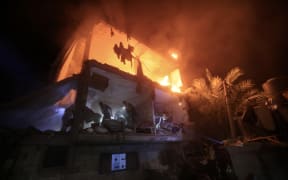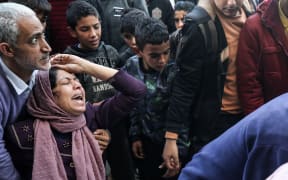By Ali Sawafta and Maggie Fick, Reuters
WARNING: This story contains images that are graphic and may be disturbing and distressing for readers.
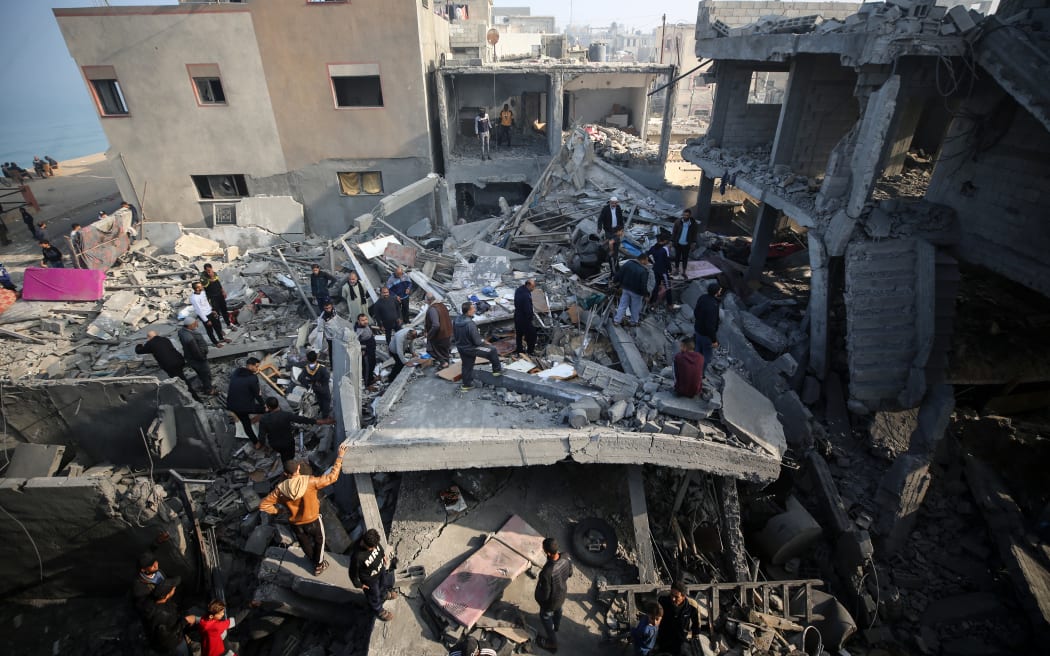
Palestinians are inspecting the damage in the rubble of a building destroyed during Israeli bombardment in Deir Balah in the central Gaza Strip, on 2 December, 2023, amid continuing battles between Israel and the militant group Hamas. Photo: Majdi Fathi / NurPhoto / NurPhoto via AFP
Israeli forces unleashed an aerial and ground blitz against Hamas in Gaza after a cross-border rampage by the enclave's ruling Islamist group on 7 October.
At least 16,015 Palestinians have been killed since then, according to Gaza Health Ministry figures, while 1200 people were killed in Hamas' incursion into Israel, according to Israeli tallies.
Aid agencies warn that a humanitarian disaster in Gaza is worsening by the hour with most of its 2.3 million people homeless and trapped in a tiny, embattled coastal enclave, with little food, water, medical care, fuel or secure shelter.
With basic infrastructure devastated, phone and internet services frequently disrupted, and a number of health statisticians having been killed or gone missing, there is increasing concern that Gaza health authorities will be unable to continue keeping an accurate count of the casualty toll.
How have casualty tolls been compiled so far?
In the first six weeks of the war, hospital morgues across Gaza sent figures to the health ministry's main collection centre at Al Shifa Hospital.
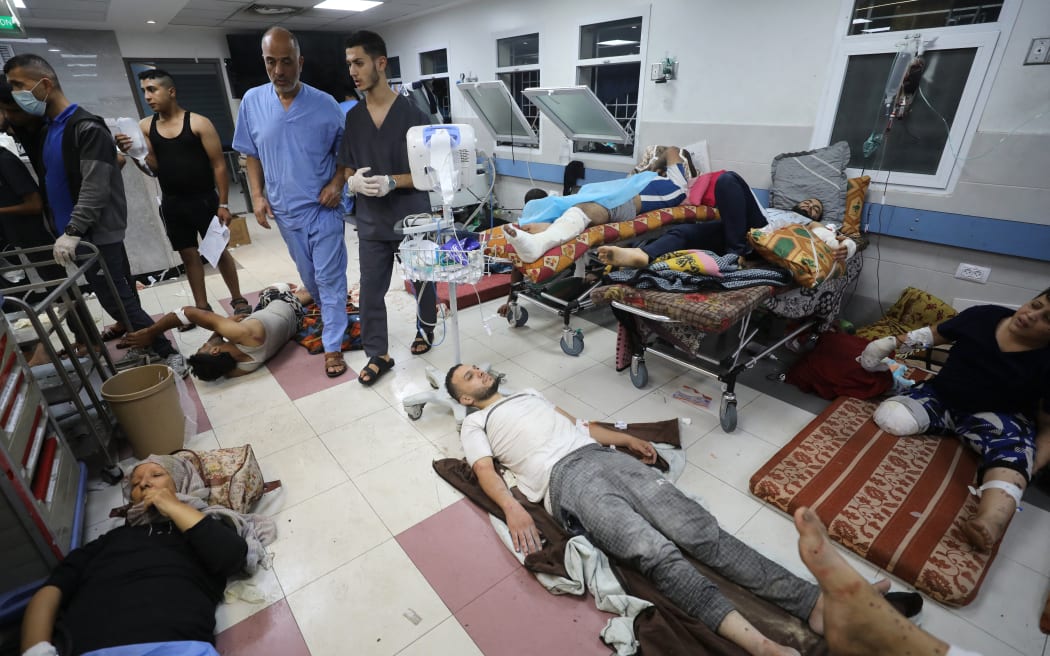
Injured Palestinians receive treatment at the Al-Shifa hospital in Gaza City on 7 November, 2023, amid ongoing battles between Israel and the Palestinian Hamas movement. Photo: AFP / Dawood Nemer
Officials used Excel sheets to keep track of names, ages and ID card numbers of the dead and transmitted these to the Palestinian Health Ministry in Ramallah, part of the Palestinian Authority (PA) that exercises limited self-rule in the Israeli-occupied West Bank.
But Omar Hussein Ali, director of the Ramallah ministry's emergency operations centre, said that of the four officials who ran the Shifa data centre, one died in an air strike that hit the hospital while the other three went missing when Israeli forces seized the premises as an alleged Hamas hideout.
"The kind of casualty recording required to understand what's going on is getting harder. Information infrastructure, the health systems that existed, are being systematically destroyed," said Hamit Dardagan of Iraq Body Count, set up during the US-led invasion and occupation of Iraq.
Since a one-week truce collapsed on 1 December, casualty updates that had generally been issued daily have become irregular. The last update from Gaza's health ministry came on Monday from spokesperson Ashraf Al-Qidra, raising the death toll to 15,899.
He did not hold his regular news conference on Tuesday. He did not issue a statement for about 48 hours, until late on Wednesday, when he sent a WhatsApp message to journalists that did not include a daily casualty report but said Al-Ahli al-Arabi Hospital in Gaza City was overwhelmed with casualties and "the wounded are bleeding to death". Reuters was unable to immediately verify the report.
Only two ministry piecemeal reports adding to the death toll have been issued, based on the number of bodies brought to two hospitals - 43 on Tuesday, 73 on Wednesday. Palestinian Health Minister Mai al-Kaila said on Tuesday Gaza's health services were in a "disastrous" state, with more than 250 staff killed and at least 30 arrested by Israeli forces.
Are the published casualty numbers comprehensive?
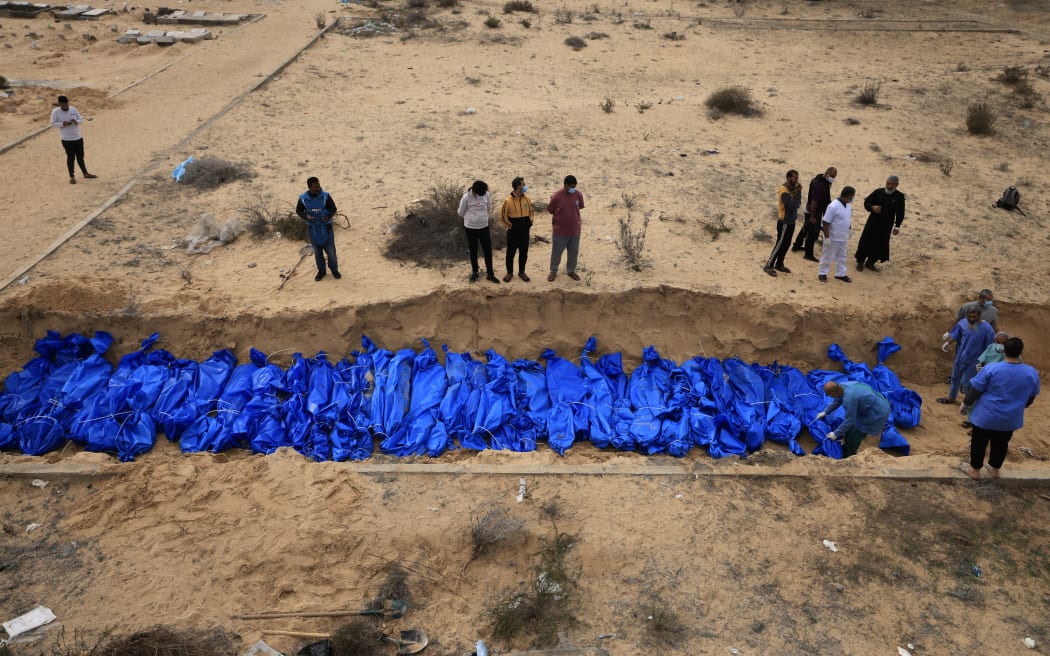
Palestinians bury bodies in a mass grave in Khan Yunis cemetery, in the southern Gaza Strip on 22 November, 2023. Photo: AFP / Mahmud Hams
No, experts told Reuters.
"Our monitoring suggests that the numbers provided by the Ministry of Health may be under-reporting as they do not include fatalities who did not reach hospitals or may be lost under the rubble," the UN human rights office spokesperson said.
"It is a logical assumption that the numbers being reported are underestimated, are low," said Nathaniel Raymond, executive director of the Humanitarian Research Lab at the Yale School of Public Health, who has worked on death counts in armed conflict and natural disasters for more than 20 years.
The PA's 26 October report said at least 1000 bodies could not be recovered or brought to morgues, citing families interviewed by its Gaza staff - a clear and plausible example of the impact of war "on data capture and reporting", the Lancet article read.
The number of bodies feared buried under the rubble now reaches into the thousands and much of the Gaza civil defence force's digging equipment has been destroyed in air strikes, the PA's health minister al-Kaila said on Tuesday.
How credible are the casualty figures to date?
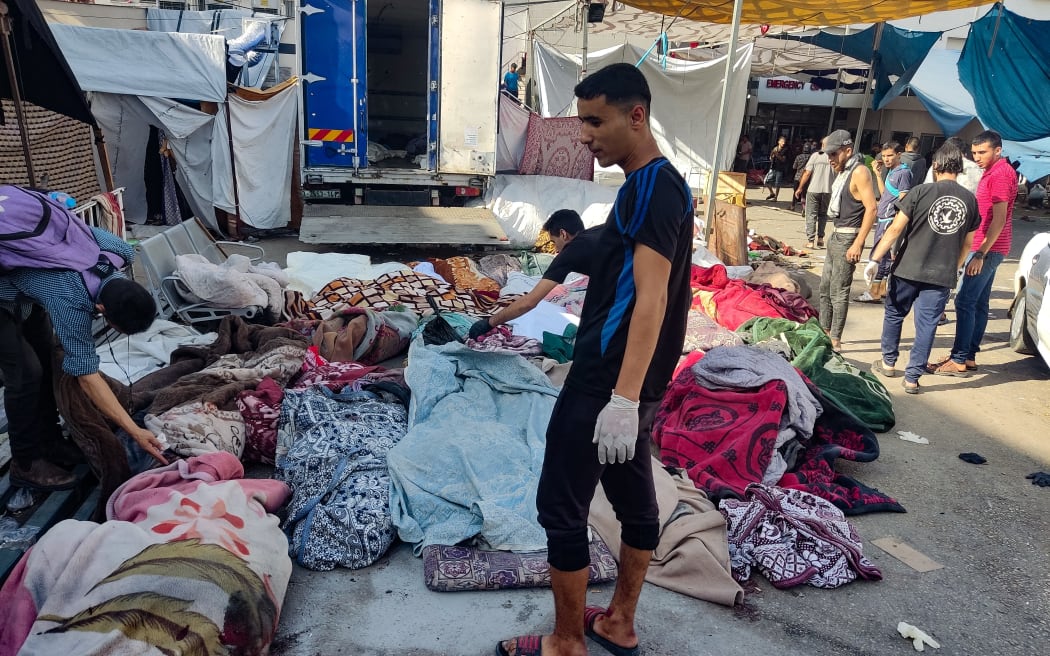
Men check the bodies of people killed in bombardment that hit a school housing displaced Palestinians, as they lie on the ground in the yard of Al-Shifa hospital in Gaza City. Photo: AFP
Pre-war Gaza had robust population statistics - from a 2017 census and more recent UN surveys - and well-functioning health information systems better than in most Middle East countries, public health experts told Reuters.
Oona Campbell, professor at the London School of Hygiene and Tropical Medicine, said Palestinian health authorities have longstanding credibility with their methods of maintaining baseline statistics and tracking deaths in general, not just during times of war. UN agencies rely on them.
"Palestinian data collection capabilities are professional and many ministry staff have been trained in the United States. They work hard to ensure statistical fidelity," said Yale University's Raymond.
On 26 October, the PA Health Ministry published a 212-page report with the names, ages and ID numbers of 7028 Palestinians it recorded as dead from air strikes - after US President Joe Biden cast doubt on the casualty figures.
Campbell and two other academics analysed the data for a Lancet medical journal report on 26 November and concluded there was no obvious reason to doubt their validity.
"We consider it implausible that these patterns (of mortality rates) would arise from data fabrication," the researchers wrote.
The PA Health Ministry has not issued a similar detailed report since, a reflection of fading communications with Gaza.
What does Israel say?
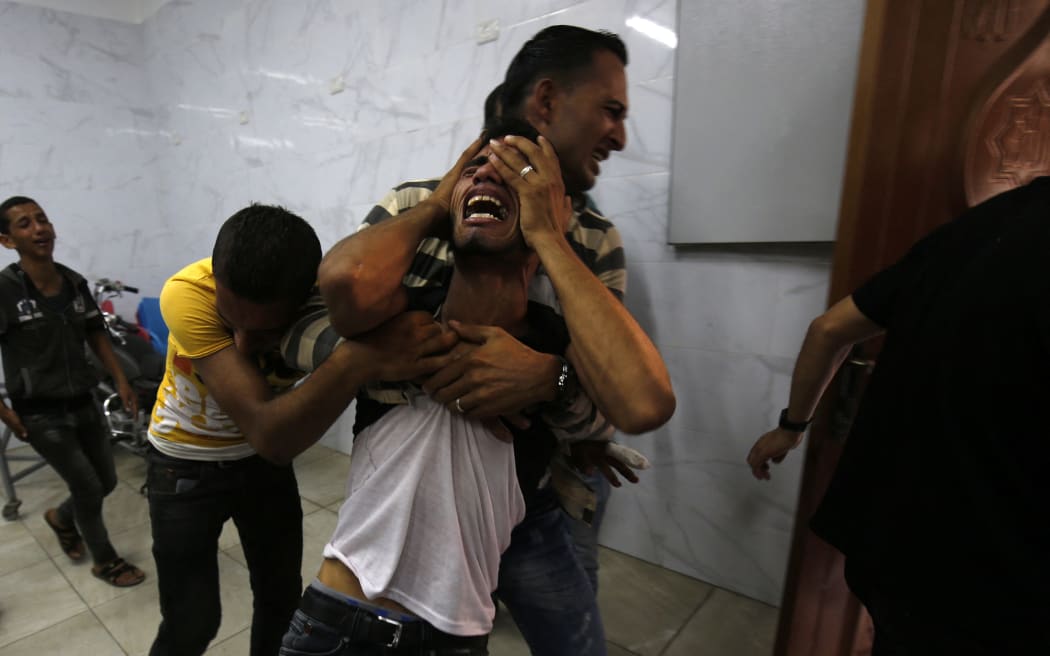
A relative of the two Palestinian men, who were killed in an Israeli air strike the night before, mourns in the morgue upon identifying the bodies in Khan Yunis in the southern Gaza Strip on 18 September, 2018. Photo: AFP / Said Khatib
A senior Israeli official told journalists on Monday that about a third of those killed in Gaza so far were enemy combatants, estimating their number at less than 10,000 but more than 5000, without detailing how the estimate was reached.
The official said the total count of some 15,000 dead as of Monday given by Palestinian authorities, who do not break down the count between civilians and combatants, is "more or less" right.
Rights groups and researchers say the high civilian toll arises from heavy weapons used - including so-called "bunker buster" bombs aimed at destroying Hamas' strategic tunnel network - and strikes on residential districts where Israel says Hamas has hidden militant bases, rocket launch pads and weaponry within and under apartment blocks and hospitals.
What's the breakdown of children versus adults killed?
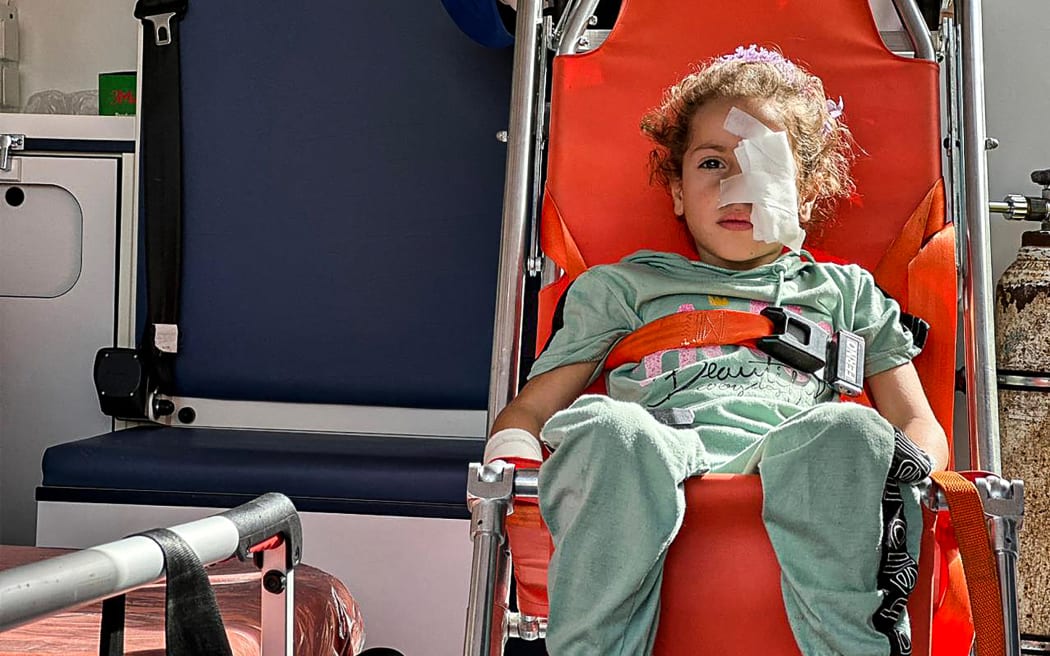
Egyptian paramedics transfer an injured Palestinian arriving on the Egyptian side of the Rafah border crossing with the Gaza Strip on 27 November 2023. Photo: AFP
The United Nations, as well as Israeli and Palestinian law, define a child as someone under the age of 18, though some Hamas militants are believed to be teenagers.
The PA health ministry said on Tuesday about 70 percent of Gaza's dead were women and children under 18, but it has released no breakdown of age categories since its 26 October report.
The Lancet article said the ministry report's data showed that 11.5 percent of the deaths recorded between 7-26 October were children between ages 0 and 4, 11.5 percent between ages 5 and 9, 10.7 percent between 10-14 and 9.1 percent between 15 and 19.
"There was a distinct peak among men aged 30-34 years, possibly reflecting combatant or civilian exposures (e.g., first responders at bomb sites, journalists, and people going out to seek water and food for their families)," it said.
Could death tolls now become a casualty of war?
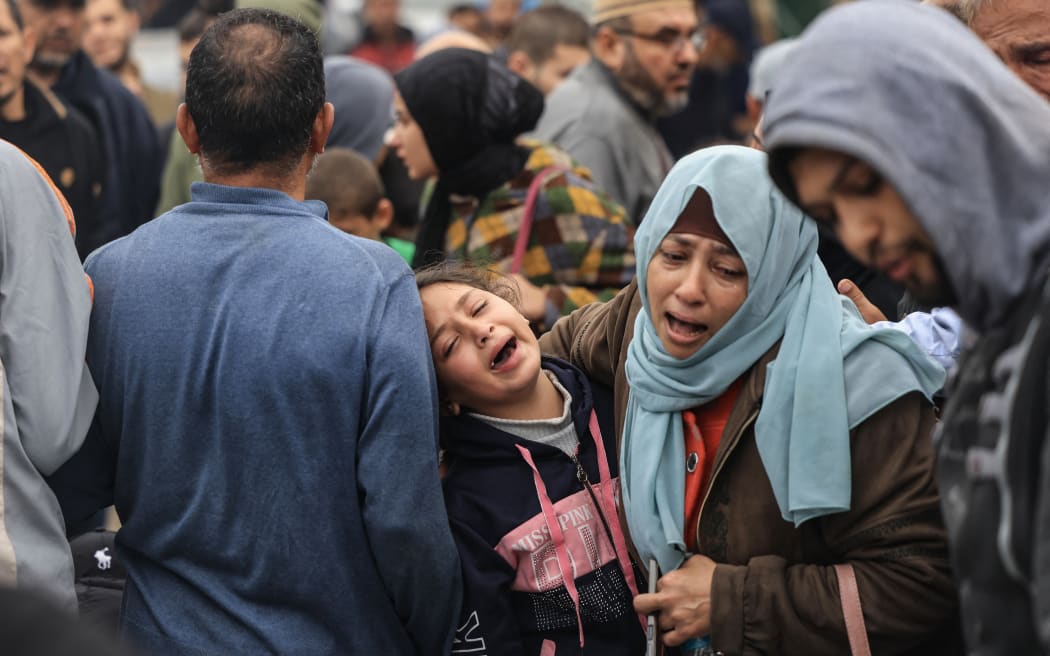
Palestinians mourn the death of loved ones following Israeli bombardment in the southern Gaza Strip on 5 December, 2023, outside a hospital in Khan Yunis, amid continuing battles between Israel and the militant group Hamas. Photo: AFP / Mahmud Hams
The new phase of Israel's offensive, expanding into Gaza's southern half from 1 December, has further diminished the scope for collecting reliable death toll data, Richard Peeperkorn, the World Health Organization's Gaza envoy, said on Tuesday.
"As we all know normally we get (data) from the Ministry of Health, and already for a number of days it is much more based on estimates, it's much more difficult for them," he said.
Experts said the fact that it was becoming near impossible for a previously efficient cohort of health technocrats to work was another harrowing indication of the toll of the war.
"It's a terrible sign when you get to a point, like where Sudan is, where you don't even have a death registry. That in itself shows to us aid workers that this is a worst-case scenario," Yale University's Raymond said.
- Reuters


